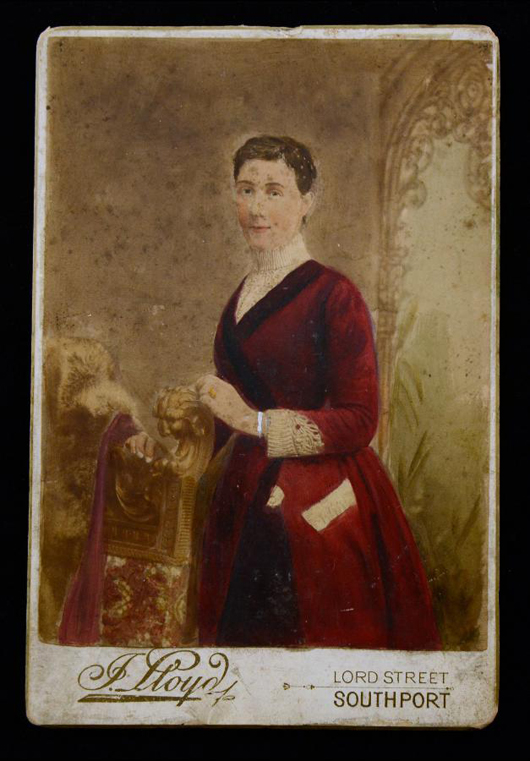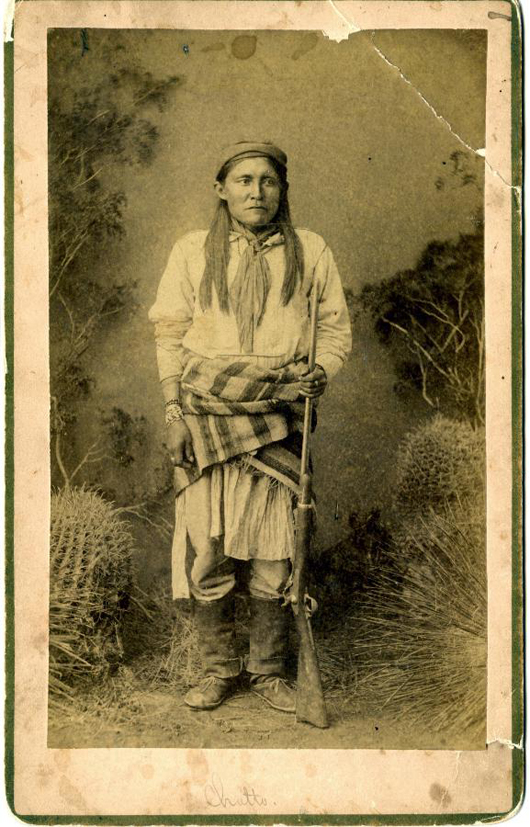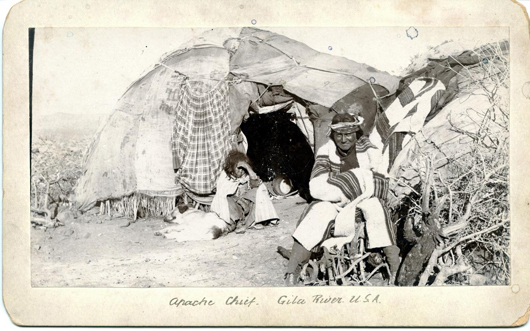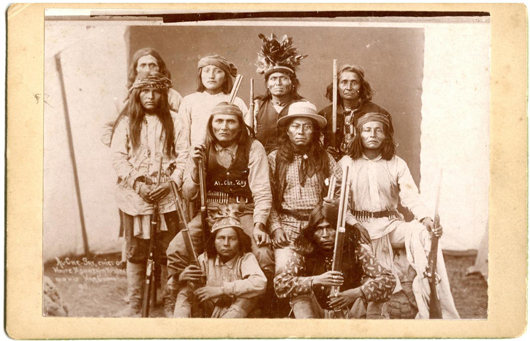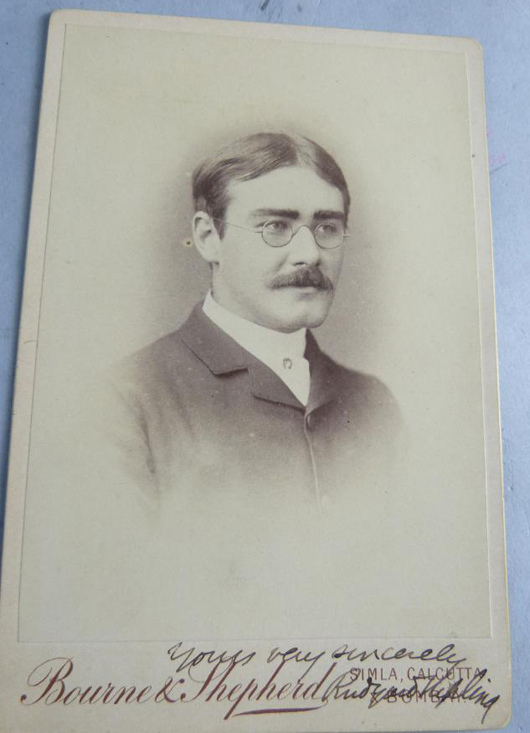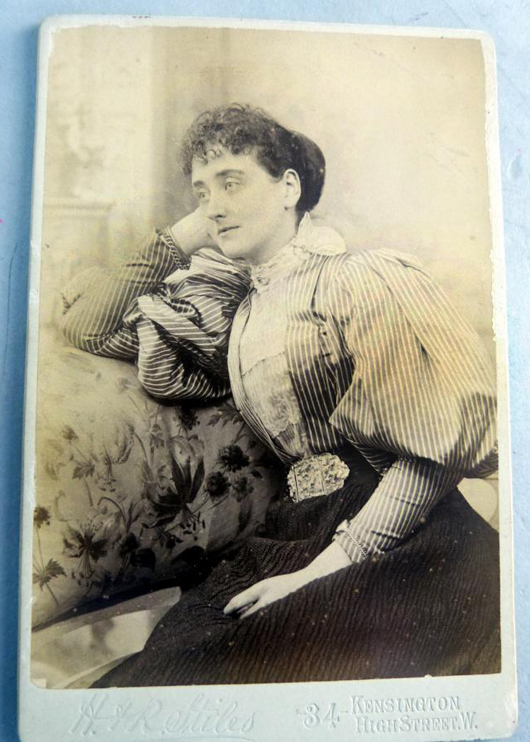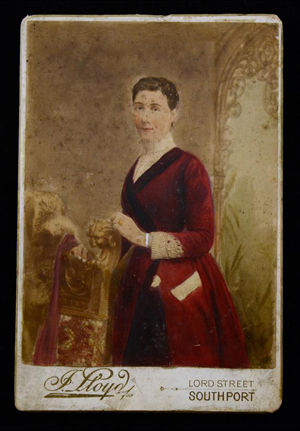
LONDON – Here’s something you don’t see every day, particularly in Lancashire: a collection of 19th century cabinet photographs of American Indian warriors, one of whom, it is speculated, might just possibly be the legendary Geronimo. The photographs were found in a small private collection not seen for 30 years and their sale later this month is set to excite buyers on both sides of the Atlantic.
Early photographs have held my fascination for many an hour and I am not alone. Collectors have also turned their attention to them, as well as vintage cameras and old albums, all hoping to find rare examples of early subjects, techniques and processes.
The same fascination gripped the Victorians when photography was only newly invented. It meant that for the first time, inexpensive, almost instant likenesses of family and friends were available to the masses.
The principal of making a permanent image using light and chemistry was developed by Frenchman Joseph Nicéphore Niépce in about 1825. However, the first practical steps toward modern photography were taken in 1839 by another Frenchman, Louis-Jacques Mandé Daguerre (1787-1851), who produced the first photographic process capable of practical application. It was called the daguerrotype, and it dominated the portraiture business for the next 20 years.
The most prolific photographic portrait of the period was the carte-de-visite, so called because it was the same size as a visiting card (54.0 mm (2.125 in) by 89 mm (3.5 in) and bore the likeness of the presenter. The tiny portraits took the place of the painted miniature and silhouette and their cheapness – about a shilling (5p) a time – led to such popularity that not only did people sit for their own to be taken, they also collected likenesses of the famous, which were on sale at booksellers and stationers.
Legend has it that the new fashion was started in France by Napoleon III. A young Paris daguerreotypist, André-Adolphe-Eugène Disdéri (1819-1889) had invented a camera that would take eight exposures on a single photographic plate, a system he patented in 1854. The resulting images were mounted on card to produce a sheet of cartes-de-visite at a much reduced cost. The story goes that in 1859, when Napoleon was marching his troops to war against Austria, he stopped off at Disdéri’s studio to have his portrait taken by the new technique, and the craze took off.
It took the Western world by storm. In England, it was the publication of a “Royal Album” in 1860 by John Mayall (1810-1901) that popularized the fashion. By 1861, Disdéri was said to be making more than £50,000 a year from the business and other photographers soon jumped on the bandwagon.
Studios sprung up in almost every town and city in Europe and across the United States. At one point, London’s Regent Street alone boasted 35. Soon, lavish, leather-bound albums were produced specially to house the pictures and the cabinet cards that followed.
Printed using the same albumen method – the substance found in egg whites caused the photographic chemicals to bind to the paper – the cabinet card grew in popularity because of its larger size of 108 by 165 mm (4.25 by 6.5 inches). When framed and placed on show in a cabinet, they were viewable across a room, hence the name.
Few Victorian families did not possess a photograph album and among its pages of snaps of relatives could also be found portraits of the royal family, politicians, actors, artists and other celebrities of the day. The albums themselves were miniature works of art and some were even fitted with music box movements, which played when the album was opened.
To open such a family album today gives a fascinating glimpse into one of the most exciting and rapidly changing periods in social history. One can spend hours comparing fashions, poses and techniques. Generally speaking, earlier pictures show the subject full length, being successively followed by three-quarter, and head-and-shoulder poses. Whichever pose is shown, it should be remembered that the sitter had to remain motionless, often with the aid of head clamps, for anywhere up to 30 seconds.
The fact that these miniature portraits are at present relatively inexpensive makes them ideal for collectors of more limited means. What helps keep prices low is that in their heyday between 1860-1880, millions were produced.
As with most old things, though, interest is picking up and good examples are an appreciating asset. Sitters who have become anonymous with the passage of time are worth only a couple of pounds, but well-known characters such as Buffalo Bill – and Geronimo – can fetch small fortunes
Victorian photograph albums start at about £25-£30 for one containing just family snaps to several thousand for famous names by well known photographers such as Disdéri and Mayall. It is also worth looking on the reverse of cabinet cards, which are often as interesting as the picture side. Most bear wonderfully ornate advertising vignettes extolling the photographer’s skills. Many collections are based on these rather than the portraits themselves.
The collection of American Indian photographs will be sold by auctioneers Silverwoods of Lancashire, Clitheroe, on Dec. 18. Among the most valuable is one by photographer A. Frank Randall of the charismatic leader Chato (1860-1934) a Chiricahua, or Warm Springs Apache, who fought under Geronimo attacking settlers in the New Mexico, Mexico and Arizona territories.
After surrendering to Gen. George Crook, he became a U.S. Army scout and led a delegation to Washington to present a petition to President Grover Cleveland in a vain attempt stop the deportation of Apaches to Florida. Ironically, he was later killed in an automobile accident. It is estimated at £1,000-£1,500.
The same estimate is carried by a photograph inscribed in ink “Apache Chief. Gila River. U.S.A.” Although unidentified, the auctioneer points out that there is a strong resemblance to Geronimo (1829-1909), a Chiricahua and the last and most feared Apache leader, who was born near Turkey Creek, a tributary of the Gila River.
He fought in revenge attacks after his mother, wife and three children were killed by Mexican soldiers in 1858. After evading U.S. troops for a decade, he surrendered in 1886 to Gen. Crook and was deported as a prisoner of war to Florida and finally Alabama. According to the auctioneers, the blankets in the photograph suggest a date of around 1870-1880, putting Geronimo’s age, if it is he, at between 40 and 50.
Another photograph is inscribed in the negative with “Al-Che-Say,” seated center left, while a later pen inscription on the reverse reads “Al-Che-Say and relations.” It is estimated at £400-£600.
Al-Che-Say (1853-1928) was a prominent Chiricahua chief who joined the U.S. Army as a scout with Gen. Crook in 1872 and helped quell an Apache uprising in 1872-73, being cited for gallantry for attempting to get Geronimo to surrender. He received a Congressional Medal of Honor for his service. He left the Army when the Apache wars ended in 1886, remaining close friends with Geronimo until the latter’s death in 1909. He later became a cattleman and continued to fight for better conditions for his people, meeting with Presidents Cleveland, Roosevelt and Harding.

ADDITIONAL IMAGES OF NOTE
